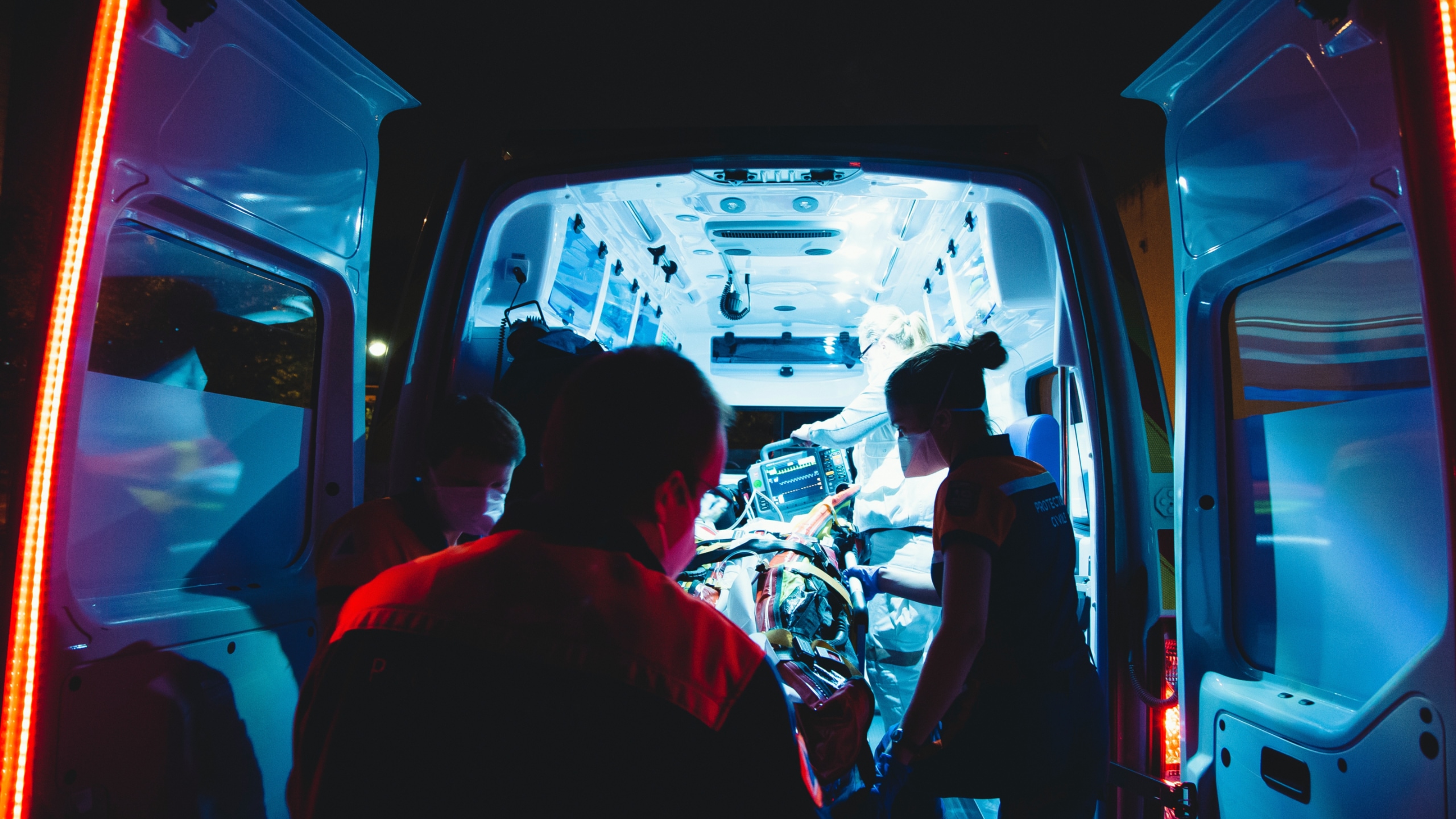Emily Moylan and Mark Dennis

The business of staying alive
What does online shopping have in common with surviving a heart attack?
Getting your online purchases from the warehouse to your front door requires a careful design of warehouse and depot locations, vehicle capacity, scheduling and routing. Logistics companies and researchers work on novel ways to represent and solve these problems to optimise cost, profit and delivery time.
Ambulance services are in the business of patient logistics. Their goal is to get medical help to patients and patients to hospital to maximize survival. More than 8,000 cardiac arrests occur outside of hospitals in NSW annually and with a survival rate of less than 15% we set out to design a system to get those patients to hospital more quickly to improve their chances of staying alive.
Treating patients like parcels
Cardiac arrest survival has been improved recently with extra corporeal membrane oxygenation cardiopulmonary resuscitation (ECMO CPR) which bypasses heart and lung functions while the patient awaits definitive treatment. The success is time sensitive, so substantial research has gone towards exploring ways to get patients onto ECMO flow faster.
Previous trials focused on testing the clinical feasibility and measuring survival outcomes, but we decided to explore what lessons could be applied from parcel logistics where substantial time gains had been achieved from optimizing the operational logistics of the service. Novel logistics strategies like parcel lockers, mobile depots, and direct-to-customer delivery are intutitively familiar to us. What innovative ideas (e.g. rendezvous points or rethinking the ‘last mile’ delivery) could the health system adapt for its precious cargo?
We applied spatial modeling and logistics methodologies to quantify the benefits of a range of ECMO CPR delivery strategies. We start with a baseline of no ECMO CPR where patients have the expected survival associated with conventional CPR for cardiac arrests outside hospital (OHCAs). The current system offers ECMO CPR at a handful of hospitals across Sydney, but due to time pressures, only about 800,000 residents could access this service.
If we imitate parcel logistics and have the ambulance rendezvous with the ECMO team at an emergency department in an intermediate location, we can increase that coverage to about 2.2 million residents. A dramatic shift in the way we treat cardiac arrests could involve the ECMO equipment and specialists travelling to the scene of cardiac arrest and starting ECMO flow on-site. This would let about 3.9 million of Sydney’s 4.8 million residents access this life-saving service.
| Treatment options | Potential patient reach |
|---|---|
| No ECMO CPR | 0 |
| ECMO at 5 major hospitals | 800,000 |
| ECMO team meets patient at emergency department | 2.2 million |
| ECMO goes to patient | 3.9 million |
Possible ECMO CPR delivery strategies
Using data from studies overseas about the probability of survival, we can estimate the number of lives saved each year. If the current system of in-hospital ECMO CPR is expected to save about 34 lives per year, we expect that sending the ECMO team to the scene of arrest could result in an additional 53 survivors per year.
Big data: saving patients and money
The advantages of alternative service delivery strategies are broader than the higher expected patient survival. Our modelling shows that the improved coverage associated with on-scene ECMO CPR could be achieved with only one ECMO team stationed in an optimised location near Homebush, whereas the status quo requires five sets of equipment and five teams of specialists to operate.
ECMO CPR at the scene of the cardiac arrest is at the frontier of emergency medicine, and there are planned and ongoing clinical trials in Paris, London, Minneapolis, the Netherlands, Sydney, and Melbourne. ECMO CPR is being deployed but the best service delivery strategy is up for debate.
Planning good health outcomes is a complex task: clinicians, economists, and public health experts should all be involved in the logistics. The research for this project was a joint undertaking between the University of Sydney Faculty of Medicine and Health with the Faculty of Engineering contributing valuable evidence for those decisions from spatial modelling, transport and logistics.
Next time you marvel at the next-day delivery options when online shopping, think what those logistics strategies could do for the healthcare system. Looking to the future, we will increasingly rely on big data and multidisciplinary collaboration in the business of staying alive.
This work is part of the EVIDENCE trial supported by the NSW Health Translational Research Grant Scheme. The authors acknowledge the EVIDENCE team, especially co-CI Dr Brian Burns and Changle Song who performed the modelling and spatial analysis.
Image: Mat Napo
Dr Emily Moylan is a senior lecturer in transport in the School of Civil Engineering at the University of Sydney. Her research uses a data-focused approach to study heterogeneity and dynamics in the transport system including reliability and resilience, response to disruption and habitual behaviour.
Associate Professor Mark Dennis is a Clinical Associate Professor at the University of Sydney Faculty of Medicine and Health and a cardiac MRI/CT expert at Royal Prince Alfred Hospital.
Share
We believe in open and honest access to knowledge. We use a Creative Commons Attribution NoDerivatives licence for our articles and podcasts, so you can republish them for free, online or in print.







